Ok, fair warning guys, today I’m getting on my soapbox! It’s been a huge week on social media for discussing the lack of inclusive/plus-size patterns and representation in the sewing industry – if you want to catch up, here’s the original post that prompted it all, my two main responses here and here, and great posts from Shannon, Mary Megan and Carolyn (among many others!).
In the spirit of this discussion, but without entirely re-hashing it, today I wanted to share with you my main bugbear when I hear discussion about catering to this section of the market. That is, when I tell people about Cashmerette Patterns, and our mission to bring awesome contemporary sewing patterns to women with curves, I get the response of “wow, that’s a great niche to be in”.
FOLKS. IT’S NOT A NICHE!
The reason it’s not a niche? The majority – actually the significant majority – of women in the US, and many other countries, are a size 14 or above and the average bra size is a D. In fact, 68% of American women are a size 14 or above, the the AVERAGE is now a size 16/18. That means that our sizing, of size 12 – 28 and cup sizes C – H, is in fact, a totally mainstream size range, which encompasses the majority of women. Which, by definition, seems to be the opposite of a niche!
PLUS SIZE IS AVERAGE.
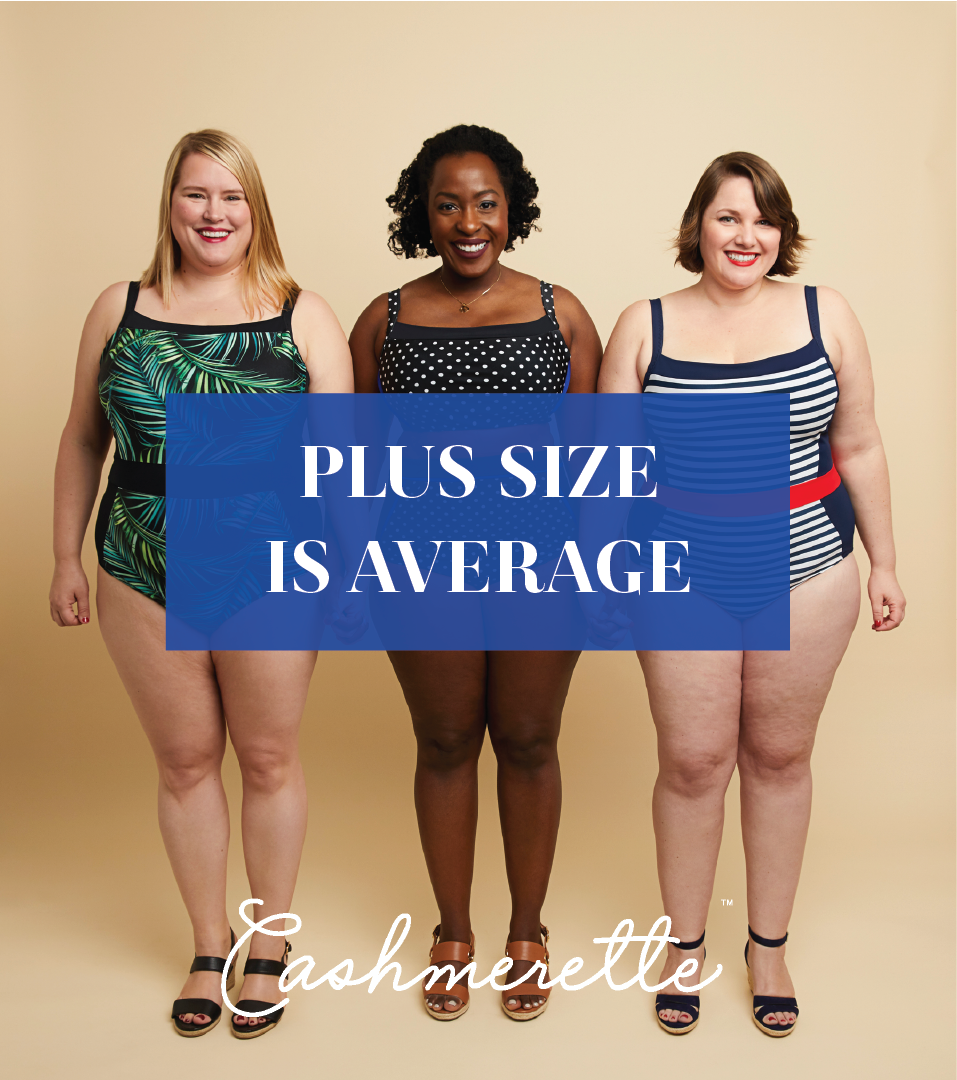
Three statistically average women! Me (an average 18/20 in Cashmerette sizing), Renee (a below-average 14/16) and Laura (an average 16)!
I’ve tried (and failed) to find a good chart of the distribution spread of wall omen’s clothing sizes, but I think it’s fair to say that it’s going to be a curve, with the peak around the average 16/18. If you want to cover most women, logically you then go up and down the scale either way from here. Specifically among plus size women, we did a big study on the Curvy Sewing Collective back in 2016, and the results were very clear, clustering around exactly that 16/18 mark.
And yet, it seems like most clothing manufacturers and sewing pattern companies didn’t get the memo. Why do they automatically assume that a “core” size range is, say, 0 – 18, when their largest size is actually the *average* woman’s size? And don’t even get me started on S-M-L-XL etc. sizing centered around the idea that an 8/10 is “M” – when I, as an average American 16/18, am considered an XXXL, something’s really wrong.
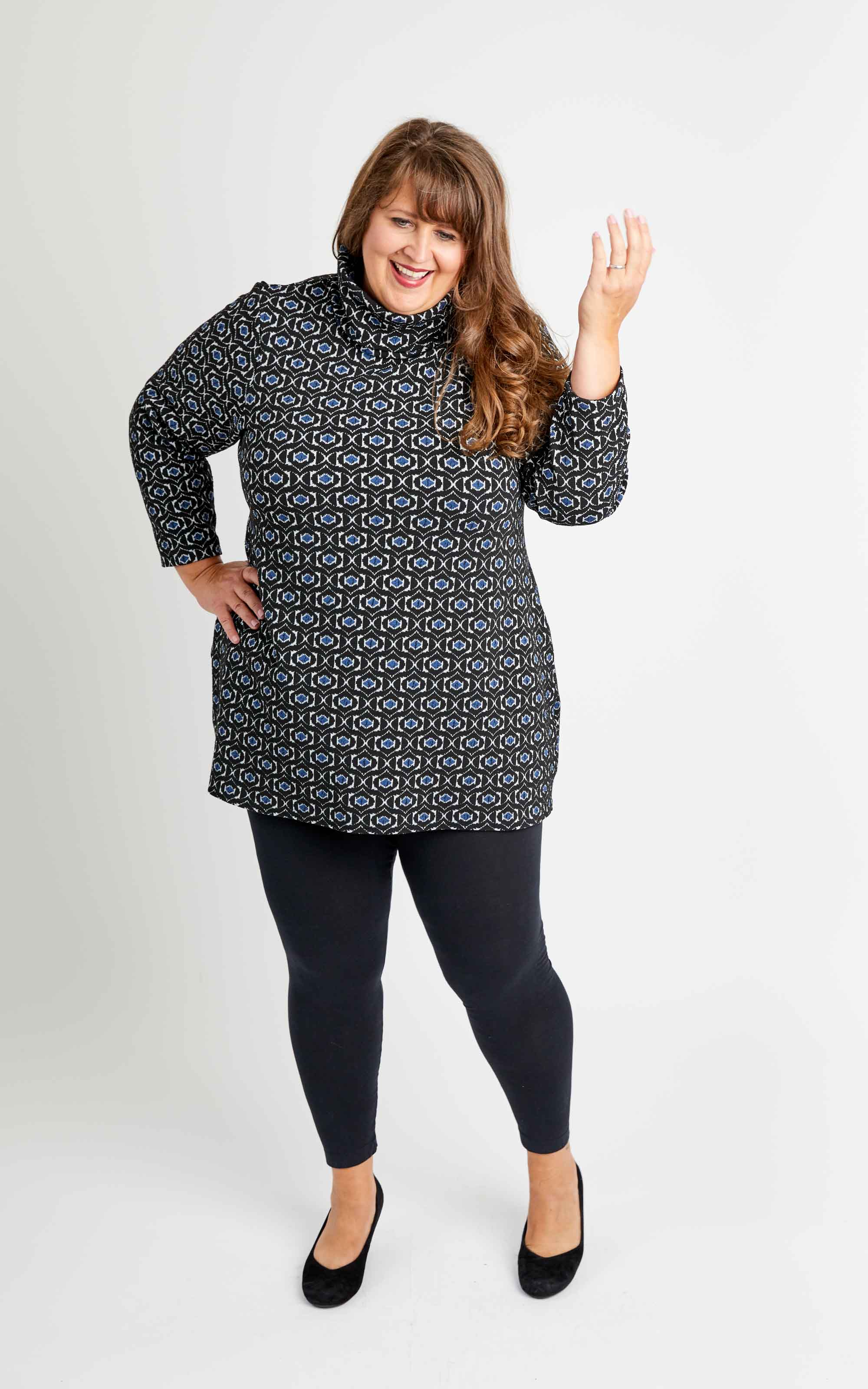
Donna, a totally normal size 26
Now while it’s entirely unfair to call women of size 12 – 28 a “niche” what is true is that the provision of clothes and sewing patterns to that demographic is in fact a niche industry right now, in the sense that it’s not being met by the majority of companies. You hear all kinds of reasons for why – and honestly speaking, some of them are more legitimate than others. It’s true that if your base size (‘block’) is a size 6, then no, just expanding and expanding up isn’t going to work – plus size women don’t have longer arms or bigger heads, or wider shoulders, or any of the wacky grading issues you see coming up!
But the more pertinent point to me is: why did you pick a size 6 to start with in the first place? Given the demographics of the female population, it would be much more relevant to start at a 16/18 and work from there. Constantly telling plus size women that you’re “expanding” your size range for them is expecting thanks for something that should have been done in the first place, and perpetuating the idea that plus size women are different, rather than the actuality that they’re very much the norm. It’s a little like initially drafting for 6′ tall women, then expecting lots of praise for expanding down to an average 5’6″. For more interesting background on the history of the plus size clothing industry, check out Andie’s blog post here.
Related is the idea that plus size bodies have more variability than straight size bodies and that they’re more “difficult” to draft for. Firstly, I’ve never seen any evidence of that difference: I have super curvy and super “up and down” straight size friends of wildly differing figures. Second: it’s not plus size bodies that are “difficult” to design for – it’s that most designers/drafters haven’t been trained in it so THEY find it a difficult thing to do. Finally, all drafters, working on bodies of ANY size have to pick a shape, so it’s false to present this as some new and confusing challenge that you only have to face with plus sizes.
Thanks for letting me vent today! This is something that really frustrates me when I hear about it, and I hope I’ve give you some arguments for next time you hear people talk about this “niche”!
I want to end though on a much more positive news. This sizing conversation has happened multiple times over the past few years, and I’m not sure why, but it seems like *this* time, the message has finally started getting across.
I’ve been honestly amazed at how many (albeit not all) companies have responded to the conversation with specific plans for change. Of course, we need to hold them accountable to their promises, but new things are coming from Grainline Studio and Helen’s Closet (announced before this controversy), and also Closet Case Files, Blueprints for Sewing, SewHouse7, Friday Pattern Company, By Hand London and several others. I’m excited to see these size extensions filter into the market, and I hope the notable quiet companies start to follow their lead soon!

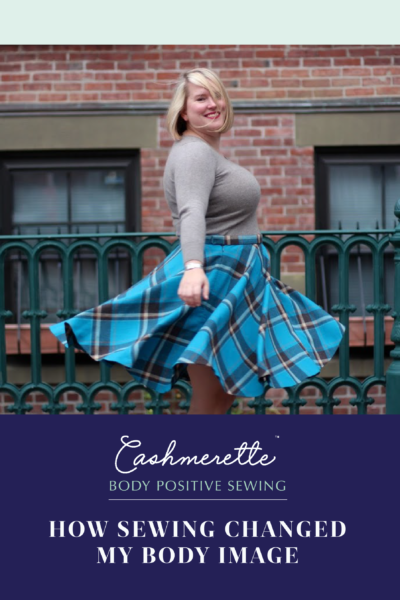
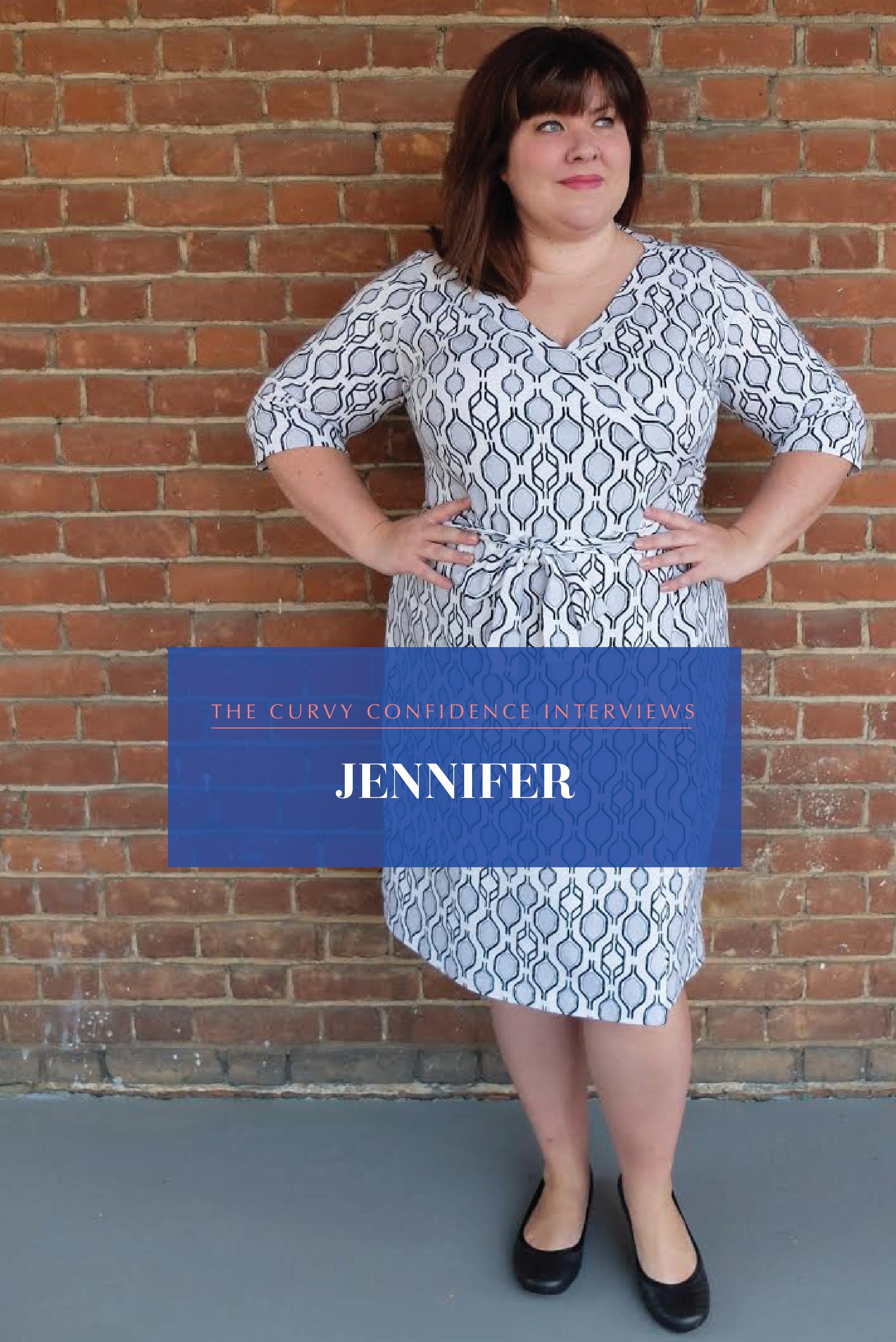
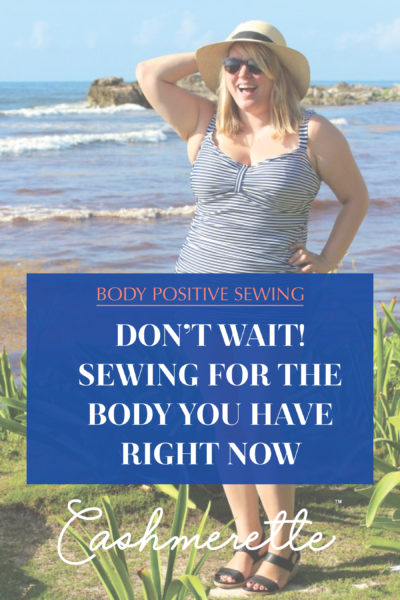
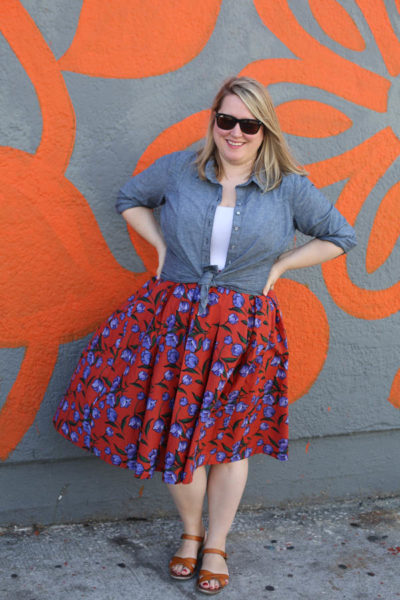
BRILLIANT BLOG POST! Now from your lips to the ears of womenswear designers and manufacturers and pattern companies everywhere! Keep up the awesome work, ladies. You are my heroes!
I have a few older rtw items that fit so well I won’t part with them. One item, a rain coat, is a “Large” I am now a size 18 and these items fit me when I was a 12 and 14 20 years ago and still fit me now. They are not baggy, but they fit in the stomach area much better than XL today! I have to buy XL for my taller daughter who is not plus size and most XL items do not fit me, I have to buy a 1X; some fit OK, but some are so baggy!. Clothing is made terribly today; can’t they get out the old “vanity” sized patterns and make quality clothing and in the USA and not China? It will sell!!! OK, my rant, I know this won’t happen which is why I sew : ).
I think you are absolutely right and when I buy a commercial pattern it is normally too small. If you look at the women around you they certainly aren’t a size 6 and I think that is why older women (71) like myself has stopped sewing for myself!
As an older (73) petite (4ft9ins) woman i have been forced by RTW to go back to sewing my clothes. I have lost some weight, meanwhile a petite large t-shirt has become a size too small! The next size up is regular xl, and is totally unwearable. At the same time my with all the stores here in Canada being shut down i am left with Walmart, The Bay and Nordstom to shop. So I am back to sewing.
Thank you for beating the drum on this. And thank you for making patterns in sizes and styles that are appropriate for average sized women. I have been fed up with having to do an FBA on everything. Cup sized patterns have changed my life!
^^^This^^^ I had given up on home sewing because I had trouble finding stuff to fit my size AND my bustline. Your patterns have been a game changer for me. Thank you!
My words exactly! Cup sized patterns are just genius! And I was so happy to see that even the Ames jeans pattern has two options, one for the pear-shaped, one for the apples. This is why I love Cashmerette patterns – and Jenny, for her dedication to make sewing more enjoyable for us normal sized women.
THANK YOU! For this company, community and post.
Even at the 16-20 range (depending on all the factors), I’m surprised at how often patterns have *HUGE* shoulders and giant neck and arm openings. Unless the designer does cup sizes, I end up having to pick a size based on my upper chest and changing almost everything from there.
Sometimes I wonder if its because the designers of smaller companies are putting themselves in the middle of the range and then designing from there??
I have been sewing for many years. When I got out of the size range of the major 4 patterns, I stopped sewing garments for myself. Then the indie designers started popping up and much to my dismay they excluded my size. I found your company when you first started producing patterns. I’ve purchased a few patterns/kits but still haven’t sewn them because it’s been so many years since I’ve made a garment, I’m nervous. I’m so glad that this issue came up this week. Hopefully we will find lots more pattern availability for plus size ranges.
I feel the same!!
BRAVO! You make the best arguments for manufacturers and pattern companies to rethink the baseline for women worldwide! While it IS true designers and pattern makers are not trained in the AVERAGE womans measurements, it is not difficult to learn what differences there are and apply these differences to what they already know! I have been designing and sewing for what mainstream calls “plus” size women for nearly 40 years, and back in my design school days, it was unheard of to even find a dress from above a size 16! I had to drape on real bodies in order to get the sloper for the client in order to flat pattern the garment they wanted. It was costly to the client, but for those who could afford my skills, it was the only way they could get beautiful garments in luxurious fabrics. The pattern companies now catering to these women are seeing women willing to pay for good quality patterning, and I hope the proliferation continues to increase their profitability. Keep creating beautiful patterns as you are one of the forerunners in the field! BRAVO!
Katherine Merkel Sussex, WI
I have never a normal size, and I really hate that term. I have bought 2 of ur patterns, one dress and the other the jeans pattern. I haven’t made the jeans yet because I honestly don’t know if it will fit plus I’m not sure how to add to the pattern of its needed. I do need to make the waist band taller so when I have my pistol an my hip the belt won’t dig in. I want to make all of my pants from this pattern because I think it looks awesome.I love that I got to pick my dress pattern by bust size. At age 12 I was a dd an back then nothing fit.
I love this blog article. As an older professional woman, who once had a much smaller body, I have been frustrated for years by the lack of good suits, dresses, and skirts for women who wear sizes over 18. Professional women don’t abandon their desire to wear well tailored clothing as they age (and spread). Fashion designers appear to think those tall lanky models represent “every woman” in the population. Kudos to you for championing our cause.
Great blog post. I gave up sewing for years, as my body changed a lot after having 3 babies. I am more of a rectangle than an hour glass, and it was frustrating to try and deal with my patterns that I purchased at the fabric store. And I totally agree, we are not a niche market anymore. I have totally gone over to the indie pattern side. If you walk into any of the women’s clothing sections at the big department stores, the plus size dept. is very much smaller than the “regular” sizes. Thanks for giving us this forum to comment.
Happy sewing
Barb
Who decided that size 14 and up needed any classification other than the actual size anyway? We don’t label size 2 and under “minus” or “skinny” sizes, so why do we label 14 and up “plus” and “queen”? And, for heaven‘s sake, why do our clothes have to be in a separate section or floor? If we’re old enough to shop we are old enough to read a size label just as well as a size 6 person even when it is mixed in with size 2s! Is someone afraid we might contaminate smaller size people?
Hear hear! This is so important!. I vividly remember reading Jackie (Uk teen) magazine in 1974 as a 14-year-old and reading about a model was “too large” at 5 foot eight 9 stone and size 10. From that moment on I understood that there was something wrong with me because I was the same height as her, 2 stone heavier and 2 stones bigger.
Not until my 30s did I see the light when a doctor told me that the weight I was when I was 15 would be about right! All those wasted years of feeling that I couldn’t be attractive had a big impact on my life. I hope teenage girls can see a range of normal that actually reflects reality from this campaign!
You are so right. Designers are NOT trained how to design for sizes over a US 14.
But it requires a huge rethink in the fashion industry and going back to basics to teach the teachers. I completed a Cert 4 Fashion Design course last year and came out not knowing anything more about how to draft for women like myself. The teachers were unable to help as they didn’t know how.
My personal pet peeves are
-Sizing . how there is usually 5 cm between sizes up to AU 16 and from on a huge jump to a 10cm or sometimes larger gap. We desperately need a mandatory standard for women’s clothing.
– ARMHOLES. So if like me you need a Bicep adjustment for larger upper arms and the length of the sleeve head seam ends up longer than the armscye the current advice is to deepen the armhole. NO! I do not want my boob to disappear into the armhole and YES I would like to be able to move my arms freely.
So thanks for delivering great patterns suitable and adaptable for us NORMALS.
Hello Kathy C. Ann here from Australia. I have worked in the industry for a very long time and also taught in both a TAFE and uni level. In answer to your comments – why not investigate drafting methods beyond what you didnt learn at school. There are a few books for drafting outer sizes and this may give you an opportunity to learn on a self study level. My apprenticeship has been 35 years long and I still seek answers.
Standard in womens clothing – impossible – I have extensive measures from women in the US, Germany, UK, Japan, Australia and Asian – all entirely different – so impossible to base a standard on.
Bicep adjust – the current method that seems to be in popular use where you split the sleeve and overlap to drop the sleevehead is infact wrong – this limits the height of the sleeve head and either causes massive drag of the sleeve itself or kicks the hem of the short sleeve up. Why not get inventive when adjusting for bicep width – mix the style of the sleeve up a bit by flaring etc.
Or shift some of your sleeve head ease into the lower part of the armhole by dividing the actual seperate front and back armhole into 3 and re-distributing – (another theory out there that has been perpetutated that sleeve ease is “all a myth” and not needed is again fundamentally incorrect)
Thanks Jenny!!! I’ve been trying to get into sewing for a couple of years now, but it’s hasn’t quite stuck yet. I see all these great patterns that I want to make, but then realise I’m outside their size range, and stall, because I don’t know how to grade up patterns yet. So, from now on sticking to patterns that come in my size, so that I can get some sewing in, and maybe I’ll come back to those smaller patterns in six months or year or two. Who knows, hopefully by then, they will have expanded their size range, and I won’t have to grade!
Interesting read Jenny as I too have been monitoring all of the discussion on social media. The discovery that the “average” size is approx a size 16 is certainly not new – this has been bandied around for years – even here in Australia the symbol size of “16” has been reported on for years (mind you the measures of the symbol size 16 will vary). I also find it interesting that the more “popular” indie brands have been quoted above yet there are quite a number of smaller indie designers that do offer outer sizes in their ranges and have been doing it since their inception.
Thank you for your post which I found very enlightening Jenny. In my opinion the ‘ it takes one to know one’ scenario applies to pattern designing for our normal bodies (otherwise referred to as plus size)! I am an older sewist, a returner after years of having RTW nightmares and fitting issues with pattern companies. However I love fashion and thankfully found Cashmerette and you rightfully deserve your success which comes from your own understanding of the problems we encounter with fit.
When I returned to sewing I paid for a costly “trouser fitting course” run locally at a fabric shop. The young tutor was fresh out of Uni after graduating with a Fashion degree and knowledgeable on pattern fitting. We were all taught how to draft a block each to our own measurements (mine being the largest) and on day 2 we cut out our patterns and sewed up a toile, mine didn’t fit, in fact my pear shaped buttocks, shapely waist, normal thighs, sway back, larger tummy and tilted waist completely threw a spanner in the works and the tutor was completely at a loss what to do. I realised from this embarrassing and costly experience that no matter how qualified (or experienced in fact) a designer is, if they don’t understand curves/larger sizes then they simply cannot draft for them!
Personally I don’t have an issue with the actual sewing as I’m quite experienced, my issue has been fitting. I decided to begin with Cashmerette and after my first success and the compliments that followed I realised I had to recognise and detail my figure faults
if I was to dedicate myself to sewing everything from now on. It has been a revelation (I got over it), to all intents and purposes these faults are not obvious now that I have addressed them and in my memade garments I look a normal (large), however here’s what I found:
Narrow Shoulders, Narrow Back, Large Upper Arms, Narrow Upper Chest, Large Bust, Short Back to Waist, Sway Back, Tilted Waist, High Hip (saddle bags), Tummy, Large Buttocks, Very long Back Crotch Length, Shorter Front Crotch Length, Upper Thighs smaller in relation to Hip Size, – 61″ Hip.
I am pear shaped but rom the front view I look like an hour glass shape. My point is that the big 4 pattern companies seem to have no knowledge in relation to curvy figure’s because they don’t recognise the issues. I
I hope anyone reading this will find it helpful in facing and solving their own issues to enable them to make their own wonderful wardrobe.
Many thanks
Diane
Diane,
I just want to say that your figure has no fautls. The fact that clothes and patterns that fit you are hard to find is the fault of clothing designers and manufacturers, not your body.
It’s all bonkers isn’t it? I used to be skinny [old UK size 10 which would now probably be a 6!] but hated that I was flat chested and still had no waist. I did love having a small bum though because that was fashionable in the 70s! Time ticked on, I grew to a 12, then stopped both making and buying clothes for some years because I couldn’t afford either! Post 3 kids, and heading for middle age, I grew a bust. And grew. Seriously I went up an inch a year from age 34…fortunately it stopped at 44 or I would have toppled on my face, still having no bum. My belly and ‘waist’ however, also got bigger.
When I started sewing for myself again, after years of costuming large ladies for opera, and making school play costumes, I found to my horror and amazement that my bust size put me into anything from size 18-22, while my hips made me 14-16 and my belly sometimes went off the scale. Blimey.
I know that, shifting demographics in mind, I’m actually ‘average’ but still consider myself fat on a bad day, stout on an average day, and ‘junoesque’ [I love that one] on a fabulous day. I don’t beat myself up over it though. I now know how to make my clothes fit, I have a better sense of personal style, and basically, give zero f***s lol
Hi Jenny, interesting post. I don’t have much experience with straight size patterns as I’ve tended to gravitate to companies which I think will work for me after a couple of disappointing experiences with Big 4 trousers early on in my sewing career; I hadn’t realised the extent of the changes I’d have to make or that straight out the packet the patterns would fit exactly as badly as RTW. To be honest I don’t think anyone is well catered for in terms of fit in RTW (although I do realise that if you’re a straight size you have a choice of much more stuff that doesn’t really fit compared to if you’re a plus size). It seems to me that a lot of designers and RTW companies are trying really hard to make everyone fit themselves into clothes with as little curve as possible – and I’m sure there’s lots of advantages to this in terms of reduced fabric costs and probably even reduced shipping costs as they probably fold more easily – but it’s not great for the wearers of the clothes. For example, on the school run I see women of a variety of sizes and shapes and the one thing the vast majority have in common is that they’re wearing raincoats which are too big around the waist and too tight around the hips – even women who are pretty straight-up-and-down. It seems to have become accepted that that is how raincoats fit. My boys’ school trousers have always been a poor fit because they don’t have enough of a crotch curve – yes, children are small, but they’re still 3D! A solution for this in RTW seems to be to use stretchy fabric where possible but this isn’t necessarily very well thought through – I own RTW trousers in a woven fabric with a lot of both vertical and horizontal stretch but a completely non-stretchy crotch seam so they still don’t fit well at the back.
The more these kind of “looks” become the norm in RTW, the more pattern designers will use the same styles, I would have thought. The more you see coats that are too straight or jeans that are too low, the more they become the fashion. And I think at least part of the issue is that it’s easier to “get away with it” on a smaller body because of the ways society views larger and smaller bodies. For example, a T-shirt that is too tight across a small bust will be viewed in a very different way to a T-shirt that is too tight across a larger bust. Trousers that are too low at the back can look “cute” on a smaller body but unacceptable on a larger one. So I think that while RTW idolises small bodies it doesn’t fit well for them, and that fatphobia at a societal level means that the same fitting issues are viewed more negatively on larger bodies.
So maybe pattern designers can sort out their fit issues with larger bodies and use what they’ve learnt to sort out their fit issues with smaller bodies as well! And maybe RTW can follow, or maybe the RTW industry will just invest its time and effort into developing ever stretchier fabrics…
Thanks for the discussion, and for the chance to add my own rant. I’m glad you’ve found your “majority niche” and I hope it’s going really well.
I sew for myself-plus size – and my granddaughter- size 8 RTW. Aside from basic dimension differences, She has a lot of the same fit issues. Broad back, narrower chest real curves ( she’s 37 30ish 39) and forward thighs. Not to mention muscular legs from 9 dance classes a week. I just don’t want to hear about how hard it is for designers to make patterns for plus sized people in general. Only a few can take something right out of the envelope and sew it up. Anyone with a lick of sense knows these things have to be adjusted somewhat. And don’t get me started on why she’s a size 8 in every RTW store and a 14 or 16 in patterns! I, however, wear a 22 in both. I will suggest what I learned many years ago from a designer – look at who designs the garment. If they look totally different from you they will have a hard time designing for you. A tall willowy person will have difficulty with a short round woman due to lack of experience or vice versa
Unless each has had very good training. One former FIT instructor told me there are very few classes in fitting “different” body types. I love Cahmerette, even though I don’t have a lot of the patterns yet. The attitude is spot on! I wish you taught a class or two at the design schools on real people sewing.
Hello. I normally don’t respond to such things, but MUST on this. First, I love Cashmerette patterns. They fit! I am 66, have been sewing since childhood, have a degree in costume design (can fit any/body but me), but quit sewing clothing for myself long ago out of frustration. Even when I was young and tiny, “normal” patterns were a waste of money.. Why? Because they were, and still are, designed for boards. Recently, I started researching the possibility of sewing for myself after a long hiatus. I learned from the pattern companies that I should use a “half size” pattern (which means curvy). I also learned that they don’t make them anymore. Really? But, that search eventually led me to Cashmerette and opened up lots of possibilities. Yay! Thanks, Jenny! Anyway, the cup-size option is awesome! All the labels should be abolished. They mean nothing.
You are right in saying size 16/18 women are average, not a niche. We just came back from two weeks at a Mexican resort, and that size of bodies was much more common than the size 8/10 that are said to be average. And there were not any of the “model type bodies” you see in a beach resort ad ! Your “rant” is something most of us have said. ♡
I find it interesting to see the directions RTW brands are taking now that more of them are getting into Plus sizes and adding them to retail locations. Old Navy and Loft in particular seem to simply “grade up” with many of their tops and dresses. What’ we end up with is something that is rather boxy and unfitted, but not necessarily accomodating to higher bra cup sizes. I find that Torid’s clothes fit me better in that regard, even though I am way out of their target age demographic. I am so thankful for pattern designers who draft for multiple cup sizes, so I can have some clothes that fit my size 18/20 cello shaped body.
I have been saying this for years. It started when I noticed RTW had very small, limited offerings in stores while other sizes had HUGE selections! I could not figure out why buyers did not get the memo that the population’s average size had gone up to include Plus Size women. While a few stores embrace the plus size woman by dedicating half of their store to each, others still persist in giving the average woman a small corner of their store in which to shop.
I had stopped trying to make clothing for myself because I did not understand how to make adjustments of any kind. After taking some classes and discovering Cashmerette Patterns I have been happy to start making my own clothes that FIT my body. Boxy designs do not work for my very curvy figure so making my own dresses and tops have been very rewarding. I have not tackled making pants but I think I may be ready to tackle your jeans pattern.
Thanks for standing up for the average woman! I hope the clothing designers and manufacturers get the message. Rant over.
I am a freelance pattern cutter. I have worked in couture level companies all my life and now I teach sewing. I would like to develop a graded block for plus sizes but the difficulty I have is finding grading charts for plus sizes. I have not been able to find one.
As you know it is not possible to successfully carry on grading upwards to produce larger sizes, as the results produce a pattern that assumes a giant frame where as in reality the frame within the body obviously stays the same. The grading has to be based on a different set of increments.
To research this information and assess sizing increments would require measuring hundreds of women to find average increments. Not just for basic bust, waist and hips but all the vertical and horizontal measurements of the body. A mapping out if you like.
Grading charts are readily available for smaller sizes. I imagine the reason for this is that most of these grading charts will have been developed in the 1950’s 60’ & 70’s when people generally were smaller. The top size in these charts is usually a UK 22 which is a 46” bust.
Plus size charts are likely to have been developed more recently by companies who have invested heavily in there research and are not about to give that information away freely to competitors.
If you know of available grading charts for plus sizes I would be really happy to have that information as I would love to be able to develop a new graded block to offer well fitting patterns for the plus size women I teach and make patterns for.
I used to be tiny, so I totally know where you’re coming from. My frame must be small but I’m now a short plus size. So some plus sized patterns are still not quite right on me.
But I imagine Burda must have done some research, as they’ve made plus size patterns, as far as I know, for over 40 years. I haven’t double checked their size charts as I haven’t used their patterns for 40 yrs but I thought they had plus sizes back then.
Also my mum was always tiny – and I wonder if food rationing during and after WW2 contributed to their slimness!! A bit off the subject, I know
I’ve gotten pretty good at sizing up patterns, but I’m that just above average size woman and I shouldn’t have to! I sew most of my clothing and one of the reasons I started buying Burda Style(back then it was Burda Mode) was because they had great plus size patterns that fit. When Hot Patterns came out I was blown away by the fact that her stylish designs actually came in large sizes. I stopped looking at most Indie patterns because their idea of sizing stopped well before they got to my hip size. It is demoralizing for women not to be able to find clothing or patterns that fit. Your patterns are wonderful for the new sewer who doesn’t know how to make an fba or even what it means and for those of us who do know how but want someone else to do the work!
I loved hearing you say it isn’t about grading and plus size women dont have bigger heads….WIDER SHOULDERS…this so resonated with me. I carry all my weight in my back and armpits and biceps…but I have really small shoulders. EVERY dress or short I buy in plus sizes the straps never stay up, or the shirts adjust to one side and fall down my shoulder and look lopsided. It drives me nuts! To get something to fit my bust measurement it never fits my shoulders!! I found it comforting to hear you air my grievance!
We are treated do poorly by the fashion industry. I would buy more if BIG sizes were available. Love your article!
Amen!!😍 Having PCOS and fibromyalgia, being a plus size woman has been a part of my entire life! To say it is challenging to find clothes that fit properly, bras and even jewelry is an understatement even though I live in America and a large majority of my female friends are plus size as well. Thank you for being our voice an advocating for every body type to feel included and celebrated! ♥️